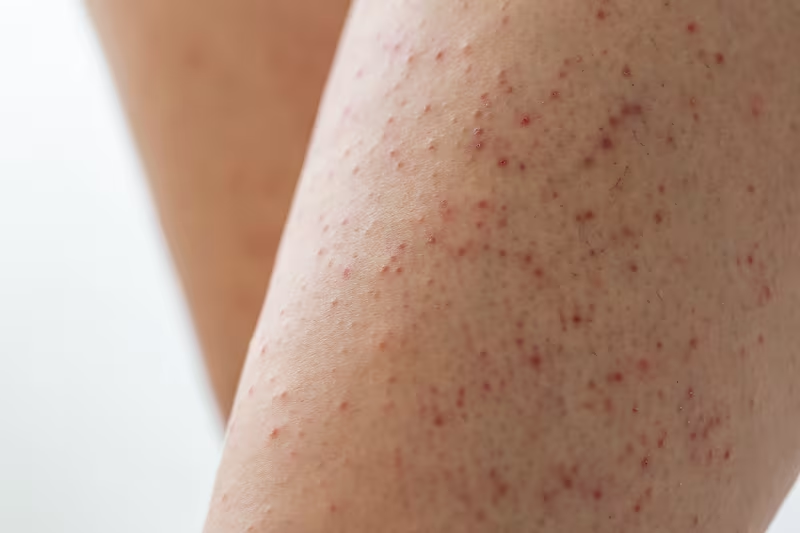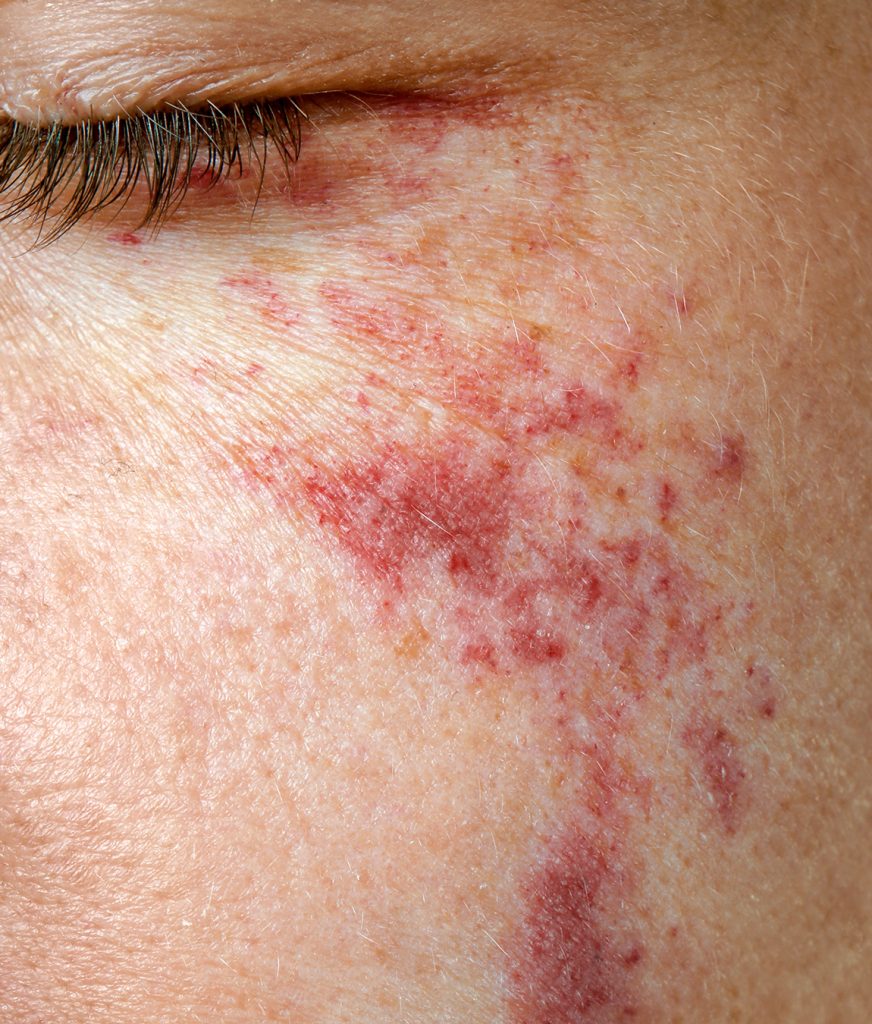Skin Blemishes
Hyperpigmentation
The problem of hyperpigmentation affects individuals across all age groups, with approximately 80% of people experiencing this issue at some point in their lives. Genetic pigmentation may become apparent from the age of 10 onwards, while pigmentation induced by sunlight typically appears from the age of 20. Age spots tend to surface around the age of 30, and various forms of age- and hormone-related pigmentation may become visible on the skin from the age of 40 onwards. To maintain a clear and blemish-free complexion, it is important to take proactive steps to prevent and treat hyperpigmentation.

Cause
- Genetic Factors: Genetic freckles are a common example, emerging during fetal development, becoming visible between ages 6 and 12, and peaking around age 18.
- External Factors: Sunlight exposure is a primary trigger and exacerbator of hyperpigmentation. Additionally, the use of low-quality skincare/makeup products, irritation, and physical damage can contribute to pigmentation.
- Internal Factors: Endocrine imbalances can lead to increased tyrosinase activity, resulting in melanin deposition. Acid-base imbalances in the body, often associated with slower metabolism, may also contribute to pigmentation. Furthermore, malnutrition, vitamin deficiencies, and sluggish metabolism can promote the formation of spots.
- Psychological Factors: Mental stress, fatigue, neurological disorders, and adrenal sebum insufficiency can heighten tyrosinase activity, leading to hyperpigmentation.
- Light Sensitivity: Certain factors, such as oral antibiotics, contraceptives, consumption of shellfish, seaweed, citrus fruits, and plants from the Moraceae family, can enhance the absorption of UV light, exacerbating pigmentation.
- Diseases: Liver and kidney dysfunction, impaired blood-formation function, poor blood circulation, and diabetes stemming from inadequate metabolism can contribute to pigmentation. Additionally, overactive thyroid function and conditions like hyperthyroidism can increase tyrosinase activity, leading to pigmentation. Skin diseases, acne, and the natural aging process, which slows down metabolic rates, may also result in pigmentation.
Symptoms and Group
Pigmentation, a prevalent form of hyperpigmentation affecting both facial and bodily areas, can be categorized into two main types: active and passive.
- Freckles
- Melasma / Chloasma
- Acquired Dermal Melanocytosis (ADM)
- Sunspots
- Age spots
- Post-inflammatory hyperpigmentation (PIH)
Keratosis Pilaris/Chicken Skin
Keratosis pilaris, also known as “chicken skin”, is a chronic genetic disorder caused by abnormal keratin accumulation of the hair follicles. Keratosis pilaris on the face often manifests on the sides of the nose, chin, and forehead. While typically painless and non-itchy, these bumps can feel rough and uneven, impacting our facial appearance.

Causes
Keratosis pilaris is primarily a genetic skin condition, with its cause largely linked to genetic factors.
Non-genetic factors contributing to keratosis pilaris include:
- Inadequate makeup removal or incomplete facial cleansing.
- Prolonged exposure to sunlight, resulting in photo damage.
- Over-washing the face, which can damage the skin barrier.
- Dry or dehydrated skin.
- Hormonal changes, particularly in teenagers with increased oil secretion. Inadequate cleansing can lead to the buildup of keratin in hair follicles instead of proper exfoliation.
Red Birthmarks
Red birthmarks, also referred to as strawberry nevus or port-wine stains, are frequently observed skin markings. These birthmarks result from clusters of widened blood capillaries near the skin’s surface and typically emerge either before or shortly after birth. Unlike some other birthmarks, red birthmarks do not naturally fade over time and, if left untreated, may progress into more serious conditions.

Causes
The exact cause of red birthmarks remains elusive. Some research suggests that the skin around a red birthmark may have a lower density of nerves compared to normal skin, contributing to abnormal blood vessel growth. Conversely, histological examinations propose that structural weaknesses in the capillary walls lead to an excessive formation of blood vessels in the outer layer of the skin. These vessels typically consist of a single layer of endothelial cells, without the characteristic cell proliferation seen in hyperplasia. Consequently, red birthmarks are often classified as hemangiomas rather than hyperplasia.
Symptoms
Red birthmarks are often dark red-, orange red- or dark purple-coloured skin markings, and appear in one of the forms below:
The first one is hemangioma, also known as strawberry mark. It is slightly raised and bright red.
The second one is port-wine stains, it is flat and developed at birth.
While hemangiomas often resolve on their own, prompt medical intervention is necessary if they manifest in sensitive areas such as the eyes, nose, or mouth. Conversely, port-wine stains tend to worsen over time, emphasizing the importance of early treatment to mitigate their progression
A:TriFX Radiofrequency (RF) Microneedling:
B:SmoothGlo™
C:M22 IPL
D:Acid Peeling
E:Mesotherapy
F:Herbal formulas: aimed at toning the body’s health and beauty from the inside out.
The first step in anti-aging is not to focus on taking care of the skin, the layer of 2mm. There are several levels of anti-aging of the skin, from the outside to the inside are the epidermis, the dermis, the fat layer, the fascia layer, the muscle layer and the bones, from which you can see the 2mm layer of skin is not the most important, cause anti-aging, the first step is to strengthen the bones, followed by muscle development, then the fascia without inflammation, followed by fat full, and finally the skin is moisturized collagen-rich, so we are to help you from the inside out maintenance, we have Chinese herbs to tonify the liver and kidneys to strengthen the muscles and bones, and then there is the TriLift lifting to exercise the muscles, and finally the Meso and M22 IPL photorejuvenation!
